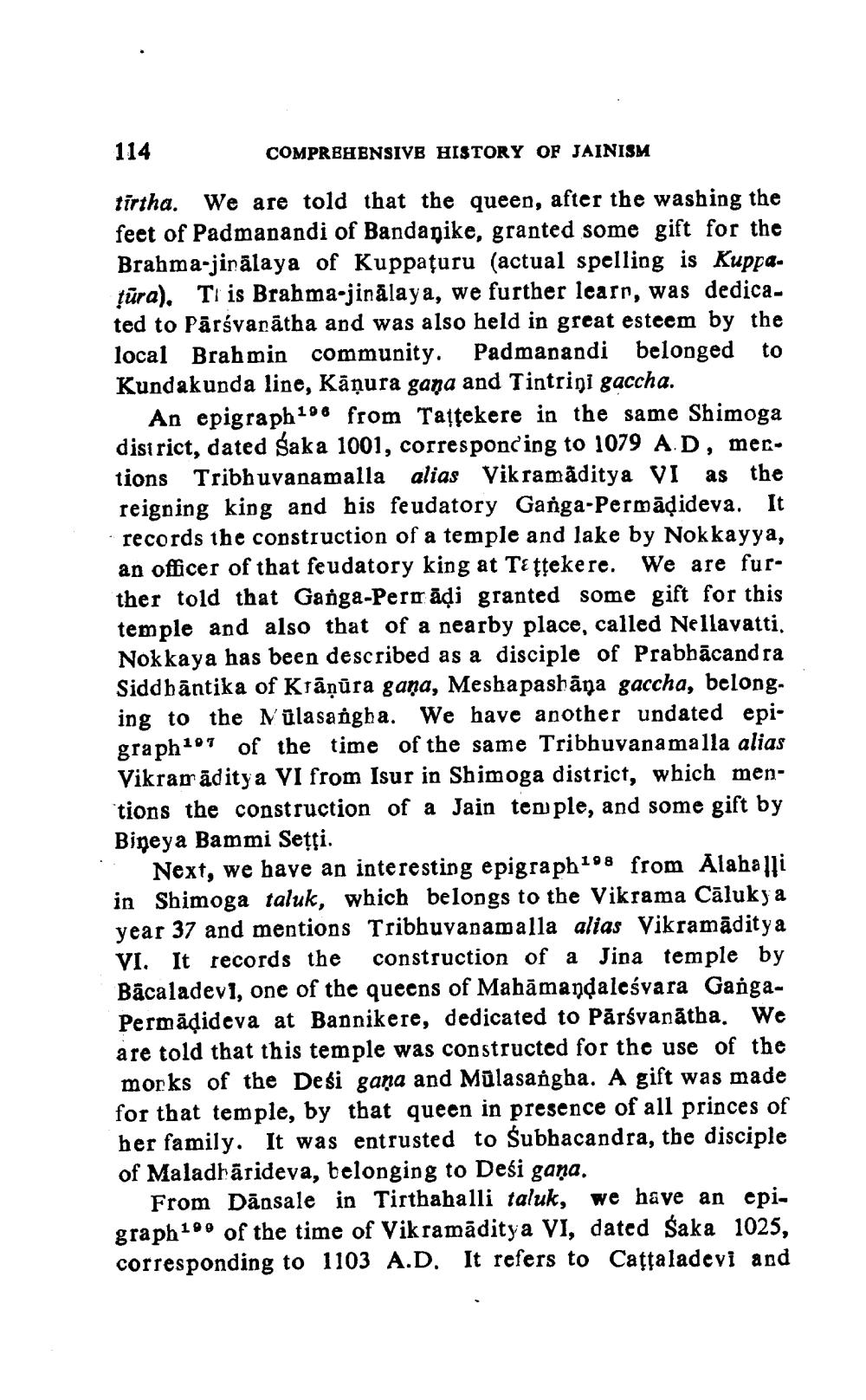________________
114
COMPREHENSIVE HISTORY OF JAINISM
tirtha. We are told that the queen, after the washing the feet of Padmanandi of Bandaqike, granted some gift for the Brahma-jinälaya of Kuppațuru (actual spelling is Kuppa. ļūra). Ti is Brahma.jinālaya, we further learn, was dedicated to Pārsvarātha and was also held in great esteem by the local Brahmin community. Padmanandi belonged to Kundakunda line, Kāņura gana and Tintrini gaccha.
An epigraph 196 from Tațţekere in the same Shimoga district, dated Saka 1001, corresponding to 1079 AD, mections Tribhuvanamalla alias Vikramaditya VI as the reigning king and his feudatory Ganga-Permādideva. It records the construction of a temple and lake by Nokkayya, an officer of that feudatory king at Tɛ ţţekere. We are fure ther told that Ganga-Perrādi granted some gift for this temple and also that of a nearby place, called Nellavatti. Nokkaya has been described as a disciple of Prabbācandra Siddhāntika of Krānūra gana, Meshapashāna gaccha, belong. ing to the Mülasaigha. We have another undated epigraph 107 of the time of the same Tribhuvanamalla alias Vikramaditya VI from Isur in Shimoga district, which men'tions the construction of a Jain ten ple, and some gift by Bineya Bammi Sețţi.
Next, we have an interesting epigraph 108 from Alahalli in Shimoga taluk, which belongs to the Vikrama Cālukya year 37 and mentions Tribhuvanamalla alias Vikramaditya VI. It records the construction of a Jina temple by Bacaladevi, one of the queens of Mahāmandalesvara GangaPermādideva at Bannikere, dedicated to Pārsvanātha. We are told that this temple was constructed for the use of the morks of the Deši gana and Mülasangba. A gift was made for that temple, by that queen in presence of all princes of her family. It was entrusted to Subhacandra, the disciple of Maladhārideva, belonging to Deśi gaña.
From Dānsale in Tirthahalli taluk, we have an epi. graph 1 of the time of Vikramāditya Vi, dated Śaka 1025, corresponding to 1103 A.D. It refers to Cațsaladevi and




